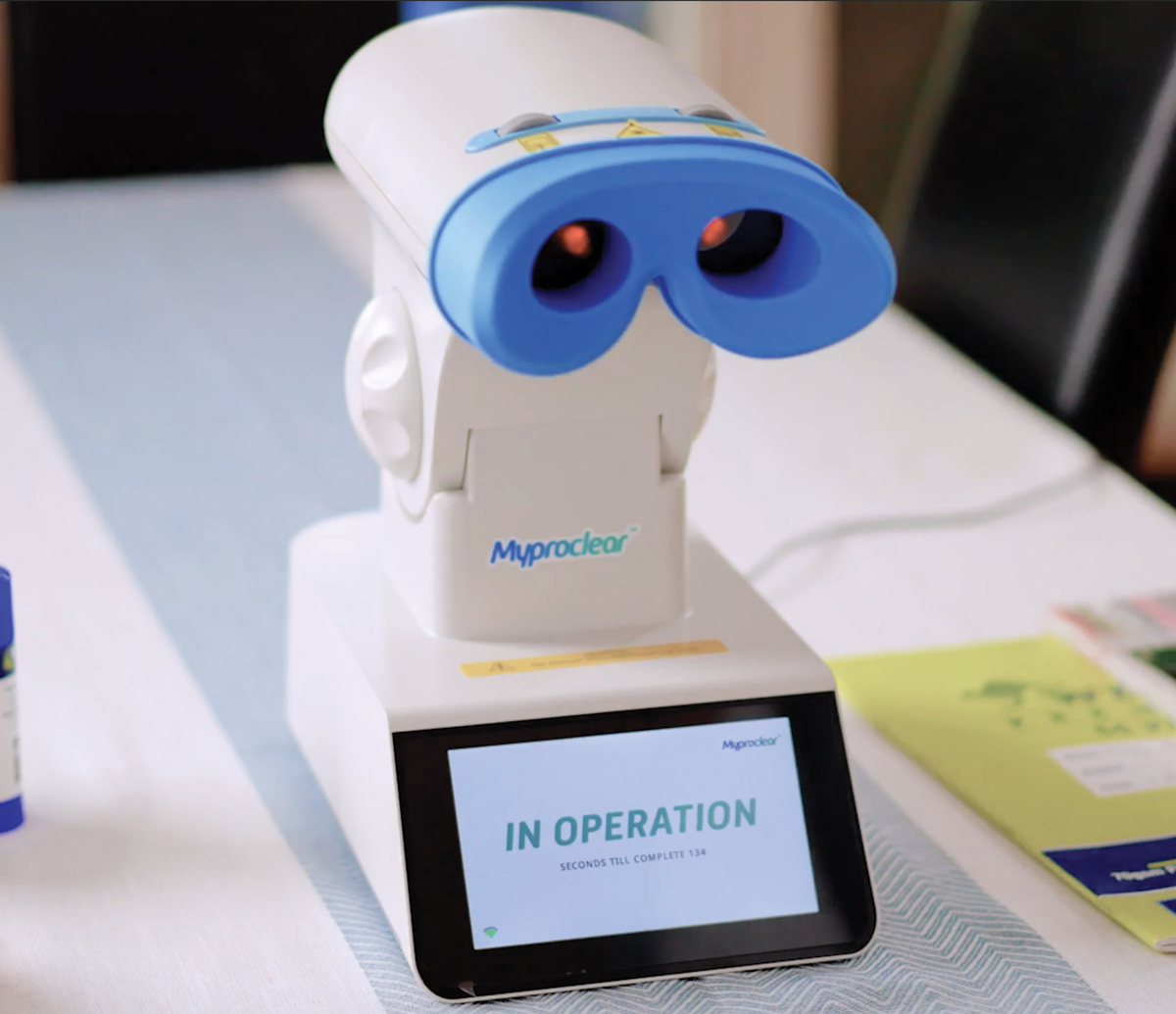 |
| Still unavailable in the US, red-light therapy for myopia mitigation continues to garner research to work out the appropriate parameters for clinical application. Photo: Eyerising International. Click image to enlarge. |
Recent studies have found that low-level, or low-intensity, red light exposure induces hyperopia and slows myopia progression. Increasing choroidal blood flow, low-level red-light therapy may help alleviate the potential consequences of reduced choroidal perfusion. However, the exact molecular pathways underlying the action of the method and its influence on choroidal and scleral responses, blood flow regulation and cellular processes involved in myopia development are still not fully understood.
Researchers in China decided to evaluate the efficacy of low-level red-light therapy for myopia control at powers of 0.37mW, 0.60mW and 1.20mW. They determined that all three power levels had a statistically significant effect on axial length (AL) elongation at any follow-up points. In contrast, the effect of low-level red light exposure on spherical equivalent (SE) was not consistently significant across all follow-up times. Despite no significant power differences, a trend indicated the potential of an even higher power level’s effectiveness.
The study, published in Ophthalmology, enrolled 200 children between the ages of six and 15 with myopia ≥-0.50D and astigmatism ≤-2.50D. Participants were randomly assigned to three intervention groups and one control group. Each intervention group wore single-vision spectacles throughout the day and randomly received low-intensity red-light therapy at 0.37mW, 0.60mW and 1.20mW twice per day for three minutes each session, with at least a four-hour interval. The control group only wore single-vision spectacles throughout the day.
At the end of six months, the progression of SE in the 0.37mW (0.01D), 0.60mW (-0.05D) and 1.20mW (0.16D) groups were significantly lower than in the control group (-0.22D). The changes of AL in the three groups (0.04mm, 0.00mm and 0.04 mm, respectively) groups were significantly smaller than in the control group (0.27mm). Similarly, increases in subfoveal choroidal thickness were significantly in the three power level groups (22.63μm, 36.17μm and 42.59μm, respectively) than in the control group (-5.07μm).
“In this trial, we show that all three powers of low-intensity red light exposure can effectively control and reduce myopia progression compared with the control group,” the authors wrote in their paper. “However, it is crucial to emphasize that no statistically significant differences in myopia control effectiveness were observed among the three powers.”
The team proposed that larger-scale samples and longer-term follow-up studies are needed for identifying the optimal power settings for low-level red-light treatment for myopia. Additionally, they thought it would be valuable to investigate whether there was a rebound effect similar to atropine drops once this type of red-light treatment is stopped, and whether higher power levels may lead to a more significant rebound effect. The research team strictly monitored fundus structure at each follow-up visit during this study and found no structural changes.
Zhou W, Liao Y, Wang W, et al. Efficacy of different powers of low-level red light in children myopia control. Ophthalmology. August 23, 2023. [Epub ahead of print]. |

